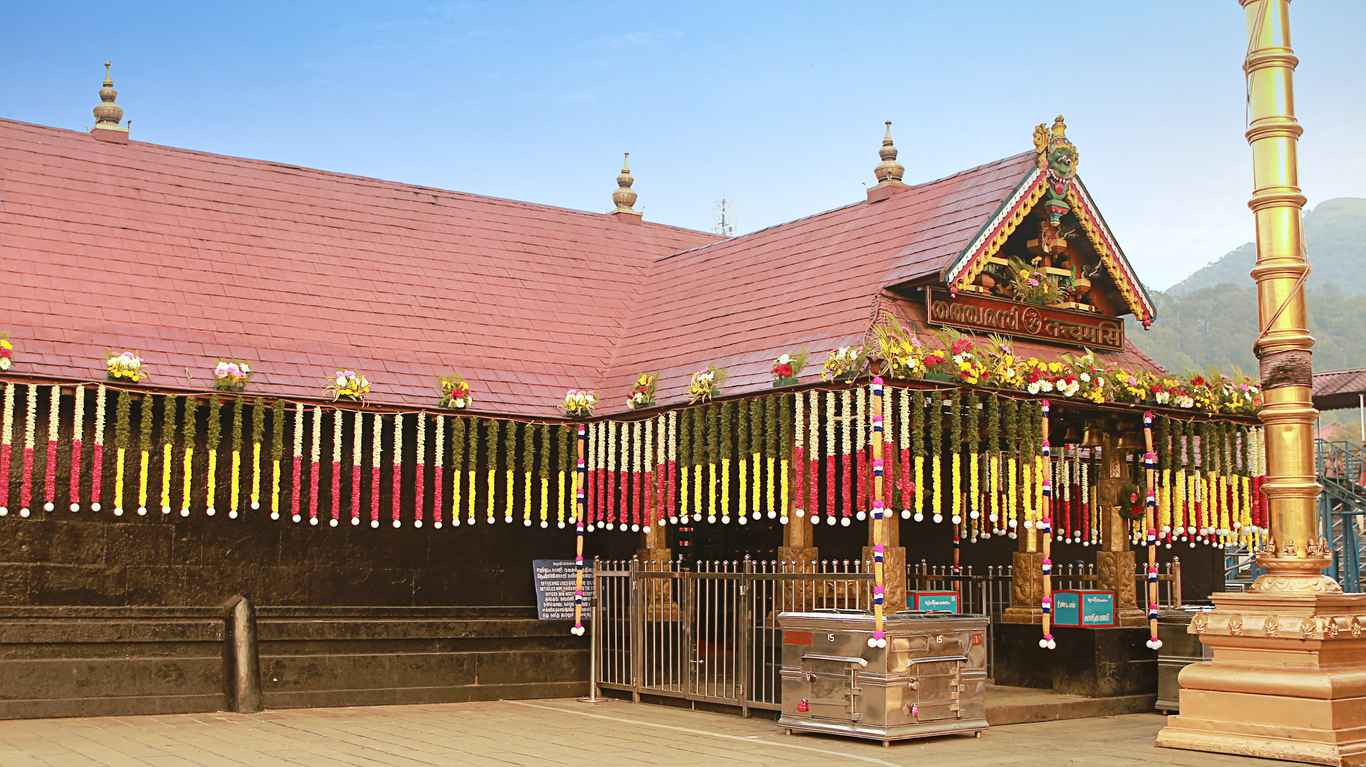
Sabarimala Temple is one of the most revered pilgrimage sites in India, attracting millions of devotees each year. Nestled in the lush forests of Kerala, this temple is dedicated to Lord Ayyappa, a deity known for his celibacy and asceticism. What makes Sabarimala unique? For one, the temple is open to devotees only during specific periods, such as the Mandala season and Makaravilakku. Another intriguing aspect is the 41-day vratham, a period of intense fasting and abstinence that pilgrims must observe before their visit. Women of menstruating age are traditionally not allowed to enter, adding to the temple's mystique. The journey to Sabarimala is arduous, involving a trek through dense forests and steep hills, symbolizing the spiritual quest for enlightenment. Curious to learn more? Let's dive into 20 fascinating facts about this sacred shrine.
The Sacred Sabarimala Temple
Sabarimala Temple, nestled in the Western Ghats of Kerala, India, is one of the most revered pilgrimage sites in Hinduism. This temple, dedicated to Lord Ayyappa, attracts millions of devotees each year. Let's dive into some fascinating facts about this sacred place.
-
Sabarimala Temple is located in the Periyar Tiger Reserve, surrounded by lush forests and hills. This serene setting adds to the spiritual experience of the pilgrims.
-
The temple is dedicated to Lord Ayyappa, a deity believed to be the son of Lord Shiva and Mohini, the female avatar of Lord Vishnu. Ayyappa is worshipped as a celibate god.
-
Pilgrims undertake a rigorous 41-day vratham (vow) before visiting the temple. This includes abstaining from meat, alcohol, and physical pleasures, as well as practicing celibacy.
Unique Traditions and Practices
The traditions and practices at Sabarimala Temple are unique and deeply rooted in ancient customs. These practices make the pilgrimage a distinctive spiritual journey.
-
Devotees wear black or blue attire and avoid shaving during the 41-day vratham. This symbolizes simplicity and renunciation.
-
Pilgrims carry an irumudi kettu, a sacred bundle containing offerings, on their heads. This bundle is divided into two compartments, one for items needed during the journey and the other for offerings to the deity.
-
The temple follows a strict policy of not allowing women of menstruating age (10-50 years) to enter. This practice is based on the belief that Lord Ayyappa is a celibate deity.
The Pilgrimage and Its Challenges
The pilgrimage to Sabarimala is not just a spiritual journey but also a test of physical endurance. The challenging trek and the rituals involved make it a memorable experience for devotees.
-
The main pilgrimage season, known as Mandala-Makaravilakku, starts in mid-November and ends in mid-January. This period sees the highest influx of devotees.
-
Pilgrims often trek through dense forests and steep hills to reach the temple. The most popular route is the 18-kilometer trek from Pamba to Sannidhanam, the temple's main shrine.
-
The temple's 18 steps, known as Pathinettam Padi, are sacred and symbolize the 18 hills surrounding the temple. Devotees must climb these steps to reach the sanctum sanctorum.
Historical and Cultural Significance
Sabarimala Temple holds immense historical and cultural significance. Its rich history and cultural impact make it a vital part of Kerala's heritage.
-
The temple's origins date back to the 12th century. It is believed that the temple was built by the Pandalam dynasty, who were ardent devotees of Lord Ayyappa.
-
The temple's architecture is a blend of traditional Kerala and Tamil styles. The sanctum sanctorum is a simple yet elegant structure made of granite and wood.
-
The temple has been a symbol of communal harmony for centuries. People of all castes, creeds, and religions are welcome to undertake the pilgrimage.
Environmental and Conservation Efforts
Given its location in a wildlife reserve, Sabarimala Temple has been at the forefront of environmental conservation efforts. These initiatives ensure the preservation of the temple's natural surroundings.
-
The temple authorities have implemented strict waste management practices to keep the pilgrimage route clean. Pilgrims are encouraged to carry reusable items and avoid plastic.
-
Reforestation efforts are undertaken regularly to maintain the ecological balance of the region. Devotees often participate in tree-planting drives during their pilgrimage.
-
The temple's location within the Periyar Tiger Reserve highlights the importance of wildlife conservation. Pilgrims are educated about the need to protect the flora and fauna of the region.
Festivals and Celebrations
Sabarimala Temple is known for its grand festivals and celebrations. These events attract devotees from all over the world and add to the temple's vibrant atmosphere.
-
The Makaravilakku festival, held in January, is the most significant event at Sabarimala. It marks the end of the pilgrimage season and features a grand procession and lighting of the Makaravilakku lamp.
-
The Mandala Pooja, held in December, is another important festival. It involves special rituals and prayers, drawing large crowds of devotees.
-
The temple also celebrates Vishu, the Malayalam New Year, with great fervor. Devotees offer prayers and seek blessings for a prosperous year ahead.
Modern Developments and Facilities
In recent years, Sabarimala Temple has seen several modern developments to accommodate the growing number of pilgrims. These facilities ensure a comfortable and safe pilgrimage experience.
-
The temple complex has been expanded to include amenities such as restrooms, medical facilities, and food stalls. These additions cater to the needs of the pilgrims.
-
Advanced security measures, including CCTV surveillance and police presence, have been implemented to ensure the safety of the devotees. This has made the pilgrimage safer and more organized.
Final Glimpse at Sabarimala Temple
Sabarimala Temple stands as a beacon of spirituality and tradition. Nestled in the Western Ghats, this sacred site draws millions of devotees each year. The temple's unique customs, like the 41-day vratham and the pilgrimage through dense forests, highlight its rich cultural heritage. The temple's history, dating back centuries, adds to its mystique. Despite controversies, Sabarimala remains a symbol of unwavering faith and devotion. The temple's strict rules, including the ban on women of menstruating age, spark debates but also reflect deep-rooted beliefs. Whether you're a devout pilgrim or a curious traveler, Sabarimala offers a profound spiritual experience. Its blend of natural beauty, rigorous rituals, and historical significance make it a must-visit. As you reflect on these facts, consider the temple's enduring legacy and its impact on millions worldwide. Sabarimala is more than a temple; it's a testament to faith and tradition.
Was this page helpful?
Our commitment to delivering trustworthy and engaging content is at the heart of what we do. Each fact on our site is contributed by real users like you, bringing a wealth of diverse insights and information. To ensure the highest standards of accuracy and reliability, our dedicated editors meticulously review each submission. This process guarantees that the facts we share are not only fascinating but also credible. Trust in our commitment to quality and authenticity as you explore and learn with us.


